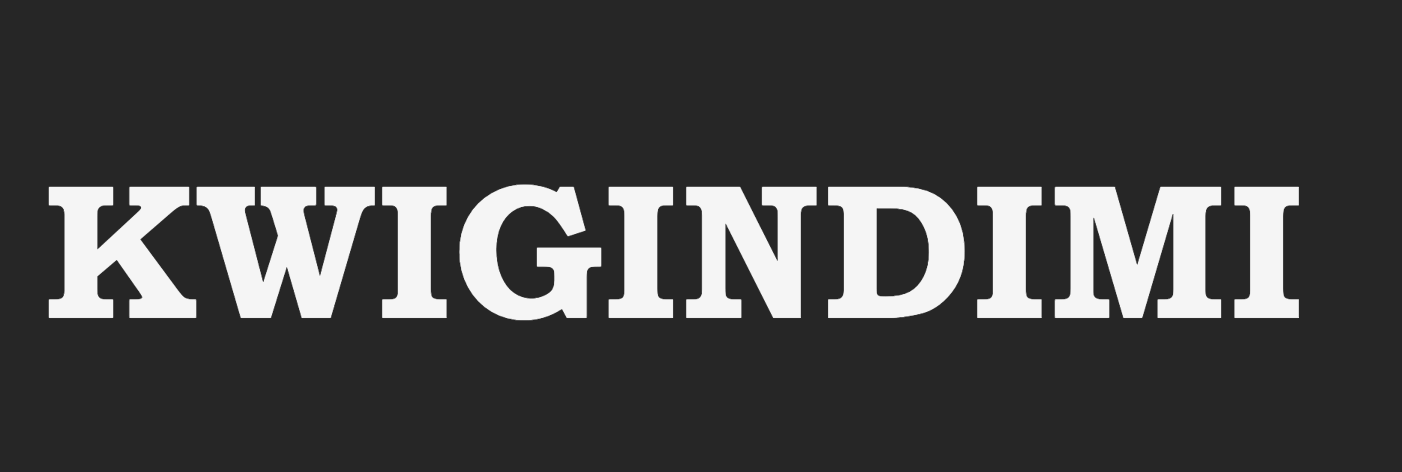In today’s hyper-competitive digital landscape, businesses of all sizes face mounting pressure to reach and engage their audiences without draining their budgets. Yet the notion that impactful digital advertising demands a lavish spend is a misconception. With strategic planning, thoughtful execution, and an understanding of emerging platforms, it is entirely feasible to launch campaigns that deliver meaningful returns on investment while keeping costs to a minimum. This comprehensive guide explores the principles, tactics, and real-world examples that empower businesses to harness the potential of low-cost digital advertising.
Laying the Groundwork with Clear Objectives
Before embarking on any advertising endeavor regardless of budget size it is essential to define concrete objectives. Vague aspirations such as “increase awareness” or “boost sales” lack the specificity required to guide strategic decisions. Instead, frame goals in measurable terms. For instance, aim to grow qualified leads by a defined percentage over a set timeframe, or target a specific uplift in website sessions attributable to paid campaigns. By establishing quantifiable benchmarks from the outset, you create a roadmap for allocating resources, selecting the most suitable channels, and gauging the effectiveness of every ad dollar spent.
Equally important is aligning advertising objectives with broader business goals. A startup seeking rapid customer acquisition may prioritize cost-per-acquisition metrics and leverage performance-driven channels, whereas a mature brand looking to reinforce customer loyalty may emphasize retargeting and content amplification. When objectives are anchored in measurable outcomes, you gain the clarity necessary to craft cohesive campaigns, avoid budget waste, and iterate toward continuous improvement.
Deep Audience Insights: The Key to Precision Targeting
One of the greatest advantages of digital advertising lies in its ability to pinpoint highly specific audience segments. This precision is invaluable for businesses operating on limited budgets, as it ensures that ads reach users most likely to engage or convert. Building accurate buyer personas is foundational to this process.
These personas go beyond basic demographics to encompass interests, behaviors, pain points, content consumption habits, and purchase motivations. By synthesizing data from website analytics, social media engagement, and customer feedback, you develop a nuanced understanding of who your ideal audience members are and how they interact with content online.
With robust personas in hand, platforms such as Google Ads, Facebook Ads, and LinkedIn Ads offer sophisticated targeting options. You can narrow audiences by location, age, gender, income level, interests, professions, and even device usage. However, over-segmentation can lead to limited reach and inflated costs, so balance granularity with scale. Start with broader segments, test performance, and then refine targeting based on engagement and conversion metrics. This iterative approach helps you discover the sweet spot where reach and relevance intersect, maximizing the impact of every advertising dollar.
Crafting a Compelling Value Proposition
Even the most precisely targeted campaign will falter if the creative fails to resonate. A clear, compelling value proposition articulates why your audience should care and what unique benefits your offering delivers.
Whether communicated through a concise search ad headline or a dynamic video opener, the value proposition must address the customer’s needs and differentiate your brand from competitors. When budgets are tight, delivering the right message at the right time becomes paramount, as each ad impression represents a precious opportunity.
Developing a persuasive value proposition begins with empathy. Step into your customers’ shoes to identify their pain points whether time constraints, budgetary concerns, or desire for convenience and frame your solution as the answer. For example, a small software provider might emphasize ease of onboarding, cost savings over traditional alternatives, and responsive customer support. By foregrounding benefits that align with audience priorities, you increase the likelihood that prospects will engage with your ad and move further along the conversion funnel.
Synergizing Organic Content with Paid Campaigns
Cost-effective digital advertising thrives on the interplay between organic content and paid promotion. High-quality, SEO-optimized blog posts, videos, and social media content attract organic traffic over time, building brand authority and generating leads without ongoing ad spend. These assets can then be amplified through cost-efficient paid channels, extending their reach and accelerating results.
For instance, a well-researched blog post addressing a common customer question can rank in Google search results and drive free traffic. Simultaneously, you can promote that blog post via social media ads targeted to users with matching interests and demographics. Because the content already provides genuine value, paid amplification often yields higher engagement rates and lower cost-per-click than purely promotional ads.
Additionally, organic followers and email subscribers cultivated through content marketing become prime candidates for remarketing campaigns, further stretching your ad budget.
Capturing Intent with Search Advertising
Search advertising remains the gold standard for cost-effective, intent-driven campaigns. When users enter queries into search engines, they signal a specific need or interest whether seeking information, comparing options, or ready to purchase. By bidding on long-tail keywords phrases comprised of three or more words that reflect precise intent you tap into audiences with higher conversion propensity and face lower competition. Tools like Google’s Keyword Planner and third-party platforms help identify these high-opportunity terms, revealing gaps where budget-friendly bidding can still deliver meaningful traffic.
Crucial to search campaign efficiency is the use of negative keywords. These prevent your ads from triggering on irrelevant queries, thereby protecting your budget from wasted clicks. For example, an online course provider might exclude terms such as “free” or “scholarship” if they seek paid enrollments. Over time, reviewing search term reports and pruning underperforming queries sharpens campaign focus, improving click-through rates and lowering average cost-per-click.
Engaging Audiences on Social Platforms
Social media advertising offers unparalleled targeting granularity and creative flexibility, making it a playground for budget-conscious advertisers. Facebook and Instagram enable audience segmentation by myriad criteria demographics, interests, behaviors, lookalike modeling, and more. Beginning with small daily budgets allows you to test campaign objectives such as website traffic, video views, or lead generation forms. As insights emerge regarding the most effective creative, copy, and audience combinations, you can reallocate funds toward top performers and pause or modify underperforming ad sets.
The visual nature of social platforms encourages experimentation with varied formats. Photo and video ads, carousel experiences, and Stories placements each present unique engagement opportunities. For minimal spend, you can repurpose existing assets such as customer testimonials or behind-the-scenes footage into authentic, relatable content. The immediacy of social feedback, in the form of likes, shares, and comments, provides real-time indicators of resonance, helping you optimize messaging on the fly without blowing the budget.
Harnessing the Power of Remarketing
Remarketing, or retargeting, unlocks tremendous value from users who have already demonstrated interest in your brand. These audiences visitors who browsed product pages, engaged with blog posts, or interacted with social profiles are warmer and more conversion-ready than cold prospects. Implementing simple pixel-based remarketing on platforms like Google Ads and Facebook Ads allows you to serve follow-up ads tailored to users’ previous actions. For example, a visitor who abandoned a shopping cart can be shown ads offering a limited-time discount or free shipping incentive, nudging them toward completion.
Remarketing campaigns typically achieve lower cost-per-acquisition rates, since they target individuals already familiar with your offerings. Moreover, segmentation within remarketing pools based on actions taken, time elapsed since the interaction, or pages viewed enables the creation of highly personalized ad sequences. These sequences guide prospects smoothly through the purchase journey without requiring a massive budget, yielding incremental revenue that would otherwise remain untapped.
Exploring Native Advertising for Contextual Reach
Native advertising platforms such as Taboola, Outbrain, and Revcontent provide another avenue for cost-effective outreach. Unlike traditional display ads, native spots blend seamlessly with editorial content on publisher sites, enticing users through compelling headlines and imagery. Because user expectations are oriented toward content discovery, native ads can generate high click-through rates at competitive costs—especially when campaigns focus on niche publishers aligned with your target demographic.
The key to success with native ads lies in headline testing and alignment with user intent. Craft content that promises to address specific pain points or curiosities, then deliver on that promise through a relevant landing page. For budget-conscious advertisers, running small-scale tests across multiple headlines and thumbnails identifies the combinations that yield the strongest engagement. Gradually shifting larger portions of budget to these winners drives incremental traffic without overextending ad spend.
Leveraging Cost-Effective Video Advertising
Video advertising has historically been associated with premium production costs, but the landscape has shifted dramatically. Platforms like YouTube TrueView charge advertisers only when viewers watch at least thirty seconds of an ad or engage with it, making video campaigns inherently cost-efficient. By producing short, focused videos such as product demos, customer testimonials, or educational explainers you can deliver engaging messages at a fraction of traditional video ad costs.
TrueView in-stream ads and discovery placements enable you to target based on search queries, viewing history, and demographic profiles. Starting with modest budgets, test different video lengths and styles to determine what holds viewer attention and drives desired actions. Success in the initial test phase allows for gradual scaling, as the cost per view stabilizes and recoupable actions, such as website visits or form completions, accumulate.
Tapping into Emerging Platforms
Savvy advertisers recognize that established channels are only part of the equation. Emerging platforms like TikTok, Snapchat, Quora, and Reddit feature engaged communities and comparatively lower competition. TikTok’s In-Feed Ads and Snapchat’s Story Ads, for instance, can be launched with minimal budgets, particularly when leveraging user-generated content or influencer partnerships. Meanwhile, Quora Ads, targeting users based on the questions they ask, align perfectly with businesses offering solutions to niche queries.
Experimentation is the name of the game on these newer platforms. Begin with limited spend to test content format, audience segmentation, and engagement rates. Even without extensive analytics sophistication, the relatively low cost-per-impression and cost-per-click on emerging networks allow for meaningful learnings. As insights accumulate, you can allocate incremental budget to the most promising channels, diversifying your advertising mix without jeopardizing overall cost efficiency.
Creative Approaches that Stretch Budgets
Beyond platform selection, creative strategies can significantly amplify the reach and impact of limited ad spends. User-generated content (UGC), for example, taps into customers as brand advocates. Encouraging existing customers to share photos, stories, and reviews under a branded hashtag yields authentic assets that resonate with prospective buyers more than polished corporate creatives. By obtaining permission to repurpose UGC in paid campaigns, you save on production costs and foster a sense of community engagement.
Similarly, micro-influencer partnerships deliver strong returns for modest fees or product exchanges. These influencers, often with niche but highly engaged followings, provide access to targeted audiences at a fraction of the cost charged by macro-influencers. Collaborative content such as unboxing videos, tutorials, or challenges can be repurposed across multiple ad formats, maximizing ROI from a single creative investment.
Bundled offers and evergreen promotions further elevate budget efficiency. Packaging products or services into compelling bundles not only increases average order values but also enhances ad relevance by presenting clear, tangible deals. Running continuous “anytime” promotions reduces the cost per conversion compared to time-limited sales, as algorithmic bidding strategies on platforms optimize toward sustainable performance metrics.
Geo-targeting and dayparting refine budget deployment by concentrating ads during times and in regions that deliver the highest return. For businesses with storefronts or regional appeal, narrowing geographic reach to high-value zip codes or cities ensures that ad dollars focus on the strongest markets. Dayparting allows advertisers to show ads only during peak engagement hours such as lunch breaks or evening browsing sessions thereby avoiding wasted impressions during low-activity periods.
Continuous Optimization for Maximum ROI
Launching campaigns marks only the beginning of a cost-effective advertising journey. Rigorous testing and data-driven refinement distinguish high-performing, budget-friendly initiatives from wasteful spending. Structured A/B tests altering one variable at a time, whether headline, creative, call-to-action, or audience definition provide clarity on what drives the best results. By gradually directing more budget toward top-performing variations, you ensure that each incremental dollar contributes to improved campaign efficiency.
Accurate conversion tracking and attribution underpin intelligent optimization. Integrating tracking pixels, setting up goal funnels in analytics platforms, and tagging URLs enable you to trace each conversion back to its originating ad interaction. Understanding multi-touch attribution how video views, social engagements, and search clicks combine to influence outcomes allows you to allocate budget across channels in proportion to their true contribution to the bottom line.
Automation features such as smart bidding and rule-based adjustments further enhance efficiency. Google’s Target CPA and Maximize Conversions bid strategies leverage machine learning to adjust bids in real time, optimizing for conversions under your budget constraints. Automated rules such as pausing low-performing ads or increasing bids when certain thresholds are met reduce manual intervention and keep campaigns lean.
Real-World Success Stories
Concrete examples illustrate how businesses have thrived on conservative ad budgets. A local boutique apparel shop in Austin allocated just ten dollars per day to social ads and saw a quarter increase in foot traffic within six weeks by targeting a narrow radius around its storefront and promoting an introductory discount.
A B2B SaaS startup combining LinkedIn text ads with Quora question-targeted campaigns generated 150 qualified leads for an average cost of $6.50 per lead by offering a free whitepaper download. An organic snack brand invested three hundred dollars in YouTube TrueView ads, identified its highest-converting interest segments, and generated four times that amount in revenue.
These success stories underscore the importance of aligning objectives with tactics, leveraging owned assets, and continually optimizing based on data. They demonstrate that with creativity, discipline, and strategic focus, advertising budgets of any size can yield outsized returns.
Avoiding Common Missteps
Budget-conscious advertisers must remain vigilant against pitfalls that can erode campaign efficiency. Neglecting mobile optimization poses a serious risk, as the majority of digital interactions occur on smartphones. Slow-loading, non-responsive landing pages lead to high bounce rates and wasted clicks. Ensuring fast, fluid mobile experiences with clear calls to action is non-negotiable for campaigns on tight budgets.
Failing to exclude irrelevant audiences also incurs unnecessary spend. Negative keyword lists, demographic filters, and placement exclusions should be updated regularly to block unwanted traffic. Overexposing the same audience to your ads without frequency caps can trigger ad fatigue and brand irritation, diminishing returns over time. Implement reasonable caps on impression frequency to keep messaging fresh and engaging.
Scaling Wisely and Measuring True Impact
Determining when to scale depends on identifying consistent winners. Once a campaign demonstrates stable key performance indicators such as cost per acquisition, return on ad spend, and customer lifetime value consider incremental budget increases of ten to twenty percent per week. Sudden, substantial boosts can confuse algorithmic bidding systems and destabilize performance. Maintain the existing campaign structure and allow automation to adapt to higher spend levels.
Beyond channel-specific metrics, focus on holistic measures of success. Customer lifetime value reveals how often and for how long acquired customers continue to engage with your brand. Return on ad spend contextualizes revenue against cost. By comparing these figures across campaigns, you allocate budget toward the most profitable initiatives and deprioritize underperforming tactics.
Embracing the Future of Cost-Effective Advertising
Looking ahead, artificial intelligence and privacy-driven targeting will further democratize digital advertising. AI-powered tools can now generate ad creative variations, identify emerging audience segments, and predict optimal bid levels functions once reserved for large agencies with deep pockets. As third-party cookies phase out, contextual targeting and zero-party data collection (surveys, quizzes, loyalty programs) will take center stage. Building robust first-party data strategies ensures personalized messaging while respecting user privacy.
Interactive formats such as augmented reality lenses, shoppable videos, and gamified polls promise high engagement without prohibitive costs. Template-based production platforms enable small advertisers to experiment with immersive experiences that once required substantial budgets. Early adopters of these innovations stand to reap disproportionate rewards, as competition remains relatively low in emerging ad formats.
Conclusion
Affordable digital advertising is not an oxymoron but a discipline grounded in strategic clarity, audience empathy, creative resourcefulness, and relentless optimization. By defining precise, measurable objectives; crafting resonant value propositions; leveraging the synergy between organic content and paid promotion; and continuously refining campaigns through data-driven insights, businesses can unlock powerful results without overspending.
As new technologies and privacy-first paradigms reshape the advertising ecosystem, cost-effective strategies will continue to evolve, placing small budgets on equal footing with the giants. The opportunity has never been greater to harness the power of cheap digital advertising and transform modest investments into substantial growth.




